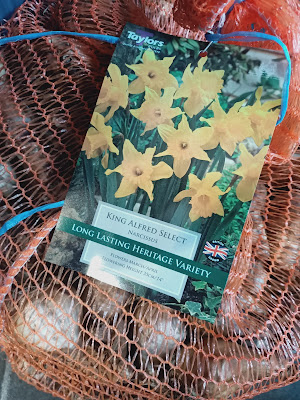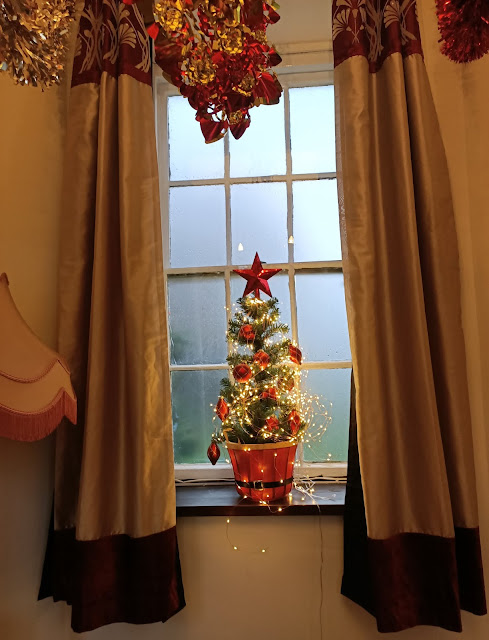Planning Ahead
We had the first frost of the year, this week, heralding the start of autumn in the gardens at Betley Court. The smell of burning wood as people start lighting log burners on colder nights adds to the seasonal change. The colour palette of the garden has begun to change, with shades of ochre and brown gradually replacing the green of summer. It won’t be long before Melvyn and Shane start their epic efforts to keep the footpaths free of leaves. We don’t burn the estimated four tonnes of leaves they collect, instead Melvyn and Shane pile them onto a massive leaf mould heap. Over the part of the year, this breaks down, supplying us with tonnes of fresh leaf mould to help nourish our poor, thin sandy soil.
 |
| Planning documents ready for approval |
Our planning proposal for rebuilding the roofs over Betley Court came before Betley, Wrinehill & Balterley Parish Council last week. As current COVID19 restrictions decree, the meeting was convened virtually, by conference call. Nigel joined the call to answer queries about our proposal, explaining some of the finer points of the design to councillors. I’m delighted to say that the councillors approved the plans, along with retrospective permission we sought for two small ancillary sheds (added to the Visitors’ hub to contain the hot water and waste water systems). Although the parish council’s decision is advisory, it’ll be passed on to Newcastle-under-Lyme Borough Council, when they consider our plans. We’re one step closer to starting on the rebuild. Finger crossed!
 |
| Slates rescued from the fire -Welsh blue (l) and Westmorland green (r) |
On the subject of roofing, our conservation architect, Mark has been trying to source slates for the mammoth job ahead. It might seem a bit soon to be looking for slates, given our plans have yet to be approved by the Borough Council, but it takes six months to fulfil an order of slates from scratch. And we need a heck of a lot of slates! I doubt many people would have noticed, but Betley Court was clad in two sorts of slate. The ‘posh’ bit of the house had ‘Westmorland Green’ slates, quarried from the area of the UK we call Cumbria today. The dovecote, brewhouse and scullery were covered with Welsh blue slate, quarried at the famous Blaenau Ffestiniog slate mine in North Wales. Interestingly, the servants’ wing was clad half-and-half with green and grey slates. Green on the side you can see from the gardens, grey facing the road. A little bit of penny pinching I’m sure no one ever noticed!
Westmorland green and Ffestiniog grey slates differ in
several ways, in addition to the obvious difference in colour. Ffestiniog slate has a finer grain and as a
result can be split into thinner pieces. It is generally easier to work, with
less wastage of slate from workings and therefore cheaper to buy. Westmorland is
thicker in grain, heavier to transport and takes more skill to cut and shape. This
adds considerably to the cost per square metre. However, it would have been
quite the status symbol for the Squire of Betley Court to show off to the
villagers.
 |
| An example of Vermont green slate on a rstoration at Leay Farm, Wirral. Gives a really good impression of how the new roof might look. Photo: www. slate.co.uk |
Mark may have found an alternative, that might be quicker, if not cheaper to procure. He’s located a large quantity of Vermont green slates, already quarried. The slate is from the same Cambrian bed of rock as North Welsh slate, only it was quarried in Vermont, USA. It is mid-thickness, and with its pale green colour has been used on many Heritage England projects, on National Parks schemes and Crown estate buildings, so sounds ideal for our use. We’ll have to see what Heritage England have to say.
There’s a whole new language to learn with the roofing project, and according to the Professor’s book This Old House, “…the various sized slates are called ‘ladies’, ‘countesses’ and ‘duchesses’ according to their position.” Quite charming! I’m looking forward to the day the handsome roof is reinstated as I always thought it was one of the house’s most unique features.
 |
| A mock up of the new brochure |
Today, our graphic design, Andy, from A Spark, A Flame, AFire sent off our new brochure to be printed. It is a thing of beauty, even
though I’ve only seen it in draft form on a computer. Andy has painstakingly
combined historic images, modern photographs and cyanotype prints, to give a
brief history of our gardens, alongside words by myself and Prof. Brown. We’re
very pleased with it, and I’m excited about seeing it in paper form.
 |
| A big sack of King Alfred daffodils should keep our volunteers busy! |
I always think of autumn and winter not as the end of the present growing season, but the beginning of next year’s. Several jobs have joined the list of things to do. One is reinstating the planting alongside the Long Path, as Shane’s restoration nears completion. I’ve sourced a huge sack of Narcissus ‘King Alfred’, a long-lasting heritage, fragrant daffodil variety to plant along the path’s edges. Provided the COVID19 rules allow it, volunteers have already offered to help us plant them. Now the heat of the summer has passed, I also have two Indian conker trees to plant out. They were planted from conkers we were told came from Kew Botanical Gardens. One will probably be planted on the lawn, near to where our walnut tree once stood. The other will join specimen trees on the paddock.
 |
| Box cuttings (Buxux sempervirens). Will be used to patch holes up in the box hedges in the formal borders. |
 |
| Hydrangea cuttings, ready for potting on. |
The cuttings I took earlier in the year (Buxus and Hydrangea) seem to have taken and will need potting on soon. They’ll eventually find places in the gardens, or be sold on, when we hold our open days. There’s always something to do in Betley Court Gardens!
All best wishes
Ladybird Su



Comments
Post a Comment